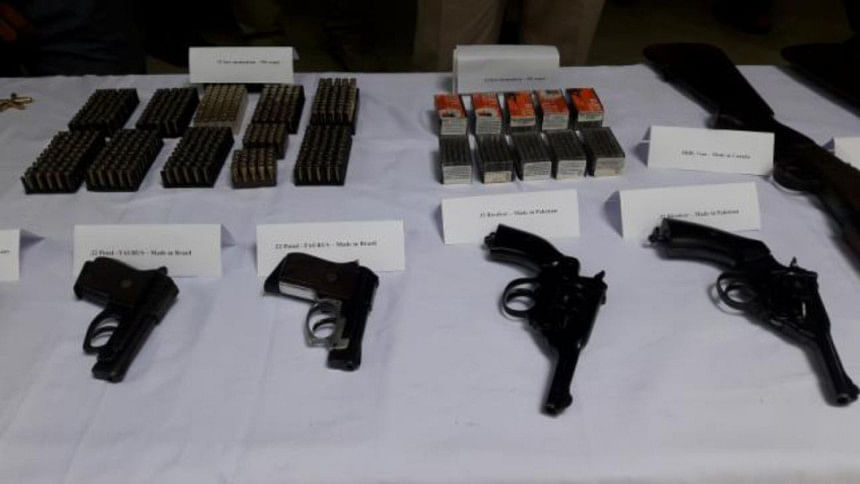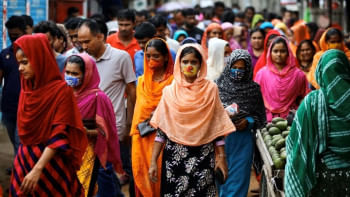Proliferation of illicit arms

Bangladesh has been for a long time plagued by the problem of illegal arms. The spread has been exponential in the last three decades, the consequences of which has been painfully manifest in our society. Illicit arms have become the arbiter of petty disputes, rather than a tool for personal protection. Porous borders and nexus between smugglers and illegal weapon dealers in close link with the purveyors of drugs and narcotics help in proliferation of the illegal weapons.
However, experts on the subject have constantly maintained, based on research and empirical findings, that much of the total volume of illegal weapons that are in circulation in the country is made up of legal weapons finding their way into the market illegally. And this has been very well exposed in a report in this paper of July 7.
We feel that there are several factors that help in the proliferation of illegal weapons. Firstly, there is a lack of monitoring of the legal market, and the systemic flaws are exploited by the unscrupulous arms dealers. Their trade licenses are renewed without going into their record of compliance with the requirements laid down by rules. The license forms have been there for ages and the booklet is very easy to forge. Secondly, there is no one single monitoring authority, according to our understanding. There is the DC office which issues the license, the local police which do the background check, and of course, the Rab to which a regular report is submitted. We feel that there should be one agency responsible for nationwide monitoring, given that weapons sold in one district may well go outside the jurisdiction of that district authorities. Thirdly, there should be a thorough investigation into the weapons that are being surrendered to the government, like the dacoits in Sundarbans do from time to time.
We should not forget that illegal small-calibre weapons have wreaked more damage to the nation than large weapons.

 For all latest news, follow The Daily Star's Google News channel.
For all latest news, follow The Daily Star's Google News channel. 



Comments